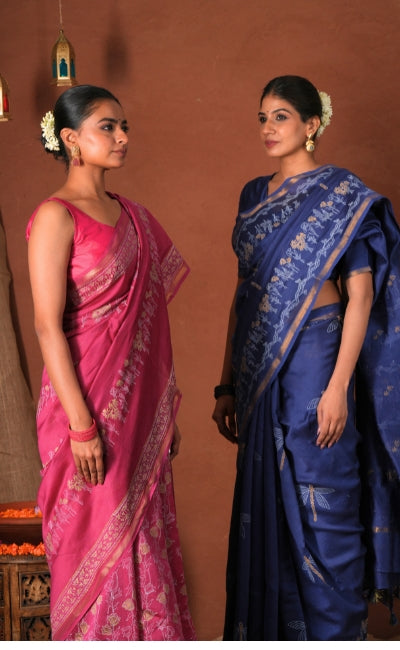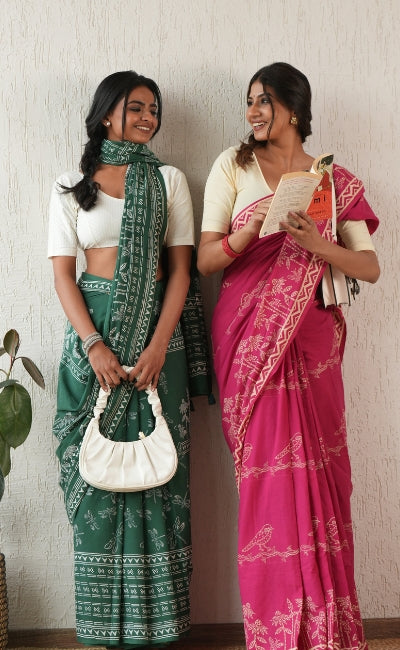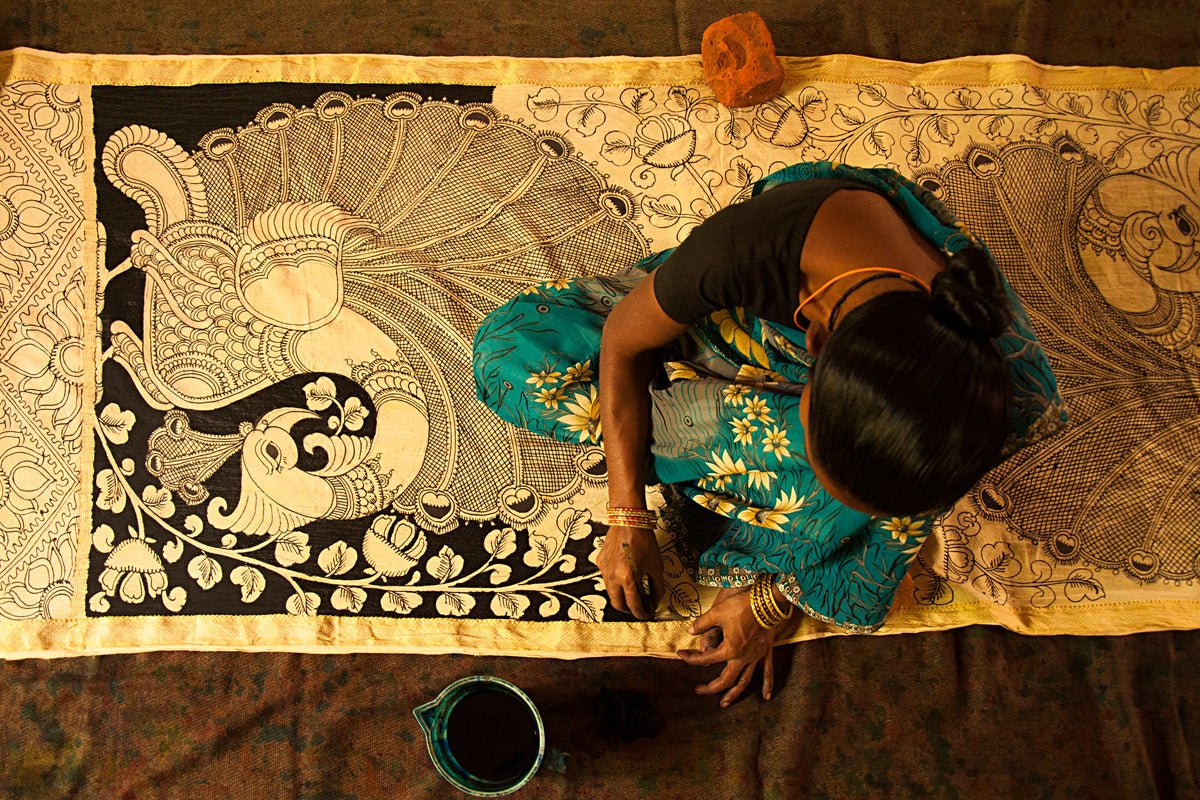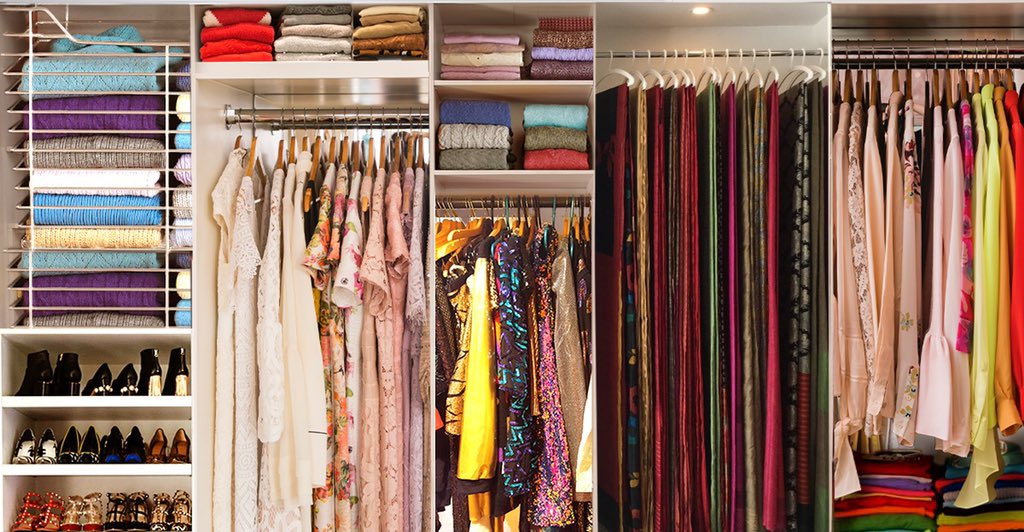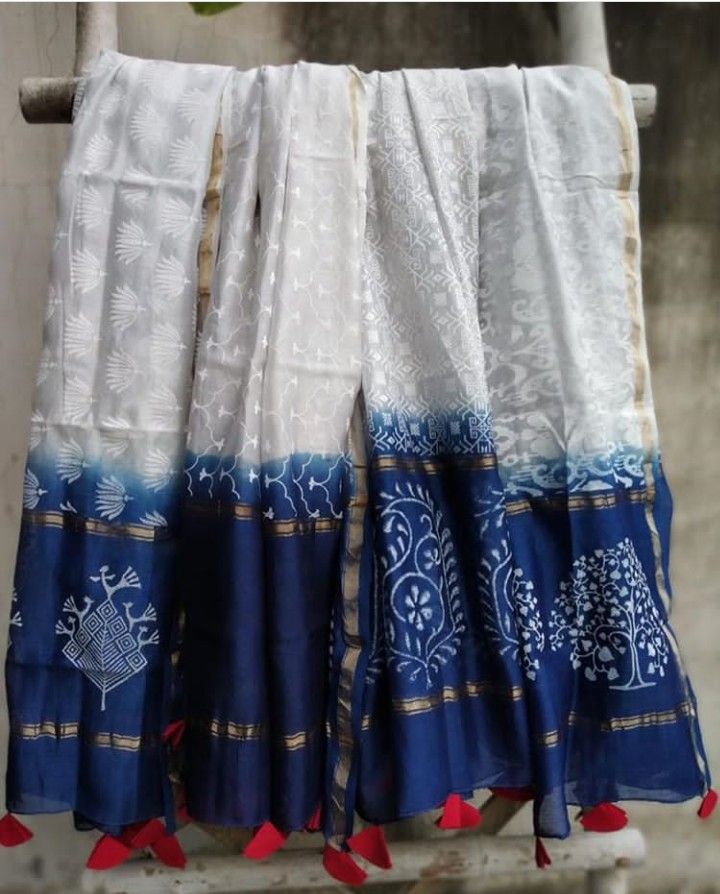
All About Dupatta
Dupatta, Odhani, Chunari, Chunni, Ghunghat, call it what you like. Still, if you know Indian movies, you'll agree that the concept of Dupatta in all its beauty and splendor has an enduring romance with Indians. Thousands of songs have been written on this rectangular strip of clothing, which is no laughing matter for Indians. It just expresses how intertwined we are with the “DUPATTA.”
The dictionary definition of the word: A Dupatta is a length of fabric worn by women from South Asia in two folds over the chest and flung back across the shoulders, usually with a kurta/salwar kameez.
Now, while that definition may be overly narrow and restricted, we all know how adaptable the dupatta is—whether it's drapes, forms, colors, designs, or other fabrics—there are too many possibilities to experiment with.
The one common fact that remains constant regardless of how or what dupatta we wear is that it enhances the appearance of every outfit. There are so many weaves, fabrics, decorations, and embroideries that we get a limitless variety of Dupattas from every region in our large country. Still, Cotton dupatta, Silk dupatta, Chiffon, and Georgette are the most frequent textiles utilized.
Dupattas have developed numerous times throughout the years due to the ever-changing dynamics of fashion, but they also have a fascinating history. It has been worn by both men and women in South Asia for ages and was essential for their daily dress. Most women used a modesty device to cover their heads and upper bodies. Women used to wear dupattas over their heads in front of elders as a sign of respect, and this tradition still exists in most temples today.
On the other hand, the dupatta is now primarily a fashion statement. It's a versatile piece that looks great with traditional Indian kurtas, lehengas, and shararas on women. Drape it over sarees to offer a distinctive, designer wear style and wear over denim to create a fusion effect.
Struggling to get the authentic cotton dupatta, phulkari dupatta, bandhani dupatta, jaipuri dupatta, rajasthani dupatta, chanderi dupatta banarasi dupatta and other types of dupatta for your next great look? Visit SootiSyahi and end your search. At SootiSyahi you will get all the latest collections and designs of chanderi dupatta, bandhani dupatta and jaipuri dupatta/rajasthani dupatta at your leisure.
Types of Dupatta
Because of our rich cultural landscape, dupattas come in various styles. The selections are infinite, ranging from Bandhani dupatta to Banarasis, Leheriyas, and silk. Let's have a look at some of the most popular dupattas among Indian women:
Banarasi Dupatta/ Banarasi Silk Dupatta
Banarasis is as regal as they come, with their rich texture of gold threads combined with cotton or silk. They're trendy these days, and when fashioned correctly, they can be a show-stopper. When paired with a contrasting, vivid Banarasi dupatta, a raw silk simple suit looks incredibly rich and sumptuous. It's appropriate for both holiday and wedding situations.
Phulkari Dupatta
Punjabi Phulkari dupattas are the essence of vibrancy, synonymous with color and life. This unique embroidery method, which translates to flower (phul) – craft (kari), is a skill of combining vivid, intense colors on coarse cotton in soft floss silk thread. Because the Dupattas are pretty bright and heavy on their own, they work nicely with basic suits or lehengas.
Kalamkari Dupatta
The Kalamkari dupatta, which originated in Telangana and Andhra Pradesh, is a work of art that gives any garment a very classy and sophisticated appeal. Often, stories from the past are hand or block printed on the dupattas. They're eye-catching accessories; wear them for both formal and casual situations.
Bandhej Dupatta/ Bandhani Dupatta
A Bandhej dupatta or bandhani dupatta, which originated in Rajasthan, is a must-have for any woman's wardrobe. It's a traditional statement piece with hues, tie and dye effect, mirrorwork, and embellishments that look great with semi-formal, formal, or even bridal ensembles.
Embellished and Embroidered Dupatta
Embroidery has long been a thread and needle game undertaken by artists, weavers, and many traditional household ladies. Tanka, Chikankari, Bengali Kantha, Patchwork, and decorations such as Dabka, zari, crystals, and stonework combine to create exciting and imaginative designs of dupattas that appear like masterpieces.
Velvet Dupatta
Velvet dupattas have gained prominence in the fashion world in recent years. They are the epitome of grace and elegance. They're warm and comfy, plus they give the outfit a stylish and sophisticated appeal. On velvet dupattas, a heavy border looks best. However, the velvet dupatta may have heavy work depending on the dress and occasion.
Bridal Dupatta
Bridal dupatta or dulhan dupatta are still the focal point of the bride's trousseau. While red is the most common color for bridal dupatta, many ladies are experimenting with different colors for their weddings. So expect to see magentas, greens, and pinks, as well as pastel peaches and powder blues! The most popular decorations for bridal dupatta includes zari, dabka, and gota patti. However, there are no rules now. Personalized bridal dupatta/dulhan dupatta with doli designs, shlokas, and even the bride and groom's whole love tales engraved on them are currently 'THE THING.' If you're a fan of the over-the-top look, you have many options.
Dupatta Styling
It's a different story for styling a dupatta, but it must have a balanced overall look. For example, if the dress is heavy, a light georgette, net, or chiffon, or cotton dupatta would look great; if the outfit is light, a richly adorned hand block print chanderi dupatta, bandhani dupatta, or banarsi dupatta or one made of silk will look great.
You can wear it in a variety of ways, including dangling from your shoulders, lying on your arms, fastened on one side, or wrapped around your neck like a scarf. The SootiSyahi bandhani dupatta, chanderi dupatta will make you feel like a star no matter how you wear it.
Grab yourself a hand block printed range of dupattas from www.sootisyahi.com and feel the authenticity of the tradition enjoyed by our ancestors.


